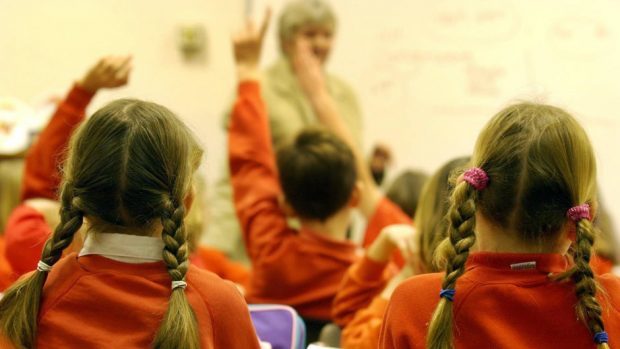Aberdeenshire’s population has rocketed by more than 20,000 in the last decade – the equivalent of adding another town the size of Peterhead to the region.
The north-east has also had an influx of young families.
In the last five years alone the primary school population has risen by 1,600 – enough to fill six new schools.
The region’s education rolls are projected to rise further still and fears have been raised classrooms could be about to “burst at the seams”.
The figures were released by the National Records of Scotland yesterday and show that despite a downturn in Aberdeenshire’s oil and gas sector, people are still flocking to the area.
Since 2006 the population has risen 8.7% from 241,180 to 262,190. Nearly 15,000 of the increase has come from migration and the remainder is “natural change” from births and deaths.
In neighbouring Aberdeen there was a similar 9.6% rise from 209,620 to 229,840.
The figures have been cautiously welcomed as an “endorsement” and a signal the region’s economic future can be bright.
Businessmen across the north-east have said the increase in population is an opportunity to reach out to new customers.
But last night leading politicians warned that without fresh investment in infrastructure, the pressure on roads and schools could be too much.
Green councillor Martin Ford said that “on one level” the rise was positive, demonstrating that Aberdeenshire is an attractive place to live.
However he cautioned that the influx of people is a challenge for the public sector. He said: “In the last five years Aberdeenshire has had an increase in primary pupils of just over 1,600. That’s 8%, like building an additional five or six good-sized schools.”
He called for more investment in education.
Democratic Independent and Green Group colleague Paul Johnston added: “Significant population growth brings challenges. Aberdeenshire is no exception.
“What we now have to do is also cope with a major downturn in the economy. More people and less resources than expected to put into the effected economy. That worries us.”
Aberdeenshire Council co-leader Richard Thomson said: “The fact that the population continues to increase reflects the quality of life and the economic opportunities we enjoy in the north-east which despite the downturn in oil and gas, remain big draws for people from the rest of Scotland and beyond who want to raise their families and make their lives here.
“That brings its own challenges in terms of making sure that our public services, particularly in terms of schools and social care, can meet demand. Nevertheless, it’s a good problem to have, and one that as a council we need to continue to show leadership in helping to address.”
Fellow co-leader Alison Evison added that there has been “huge investments in the school estate” in recent years and the recently agreed City Region Deal will free up cash for fresh investment.
“We need to continue to work to encourage key workers such as teachers and health professionals into our area too,” she said.
“A priority going forward must be more affordable housing.”
And Conservative leader Jim Gifford described the new figures as “a good challenge to have” because some local authority areas are actually losing residents to migration.
“It adds to the vibrancy of the area and the people are spending money in our shops,” he said. “But can the infrastructure cope?
“If you decide to build a new school and three years later it’s bursting at the seams that’s a problem. In Kintore we had to build a second new school to cope.”
Yesterday’s announcement by the National Records of Scotland was described by north-east Liberal Democrat leader councillor Karen Clark as a “positive endorsement” of what the region has to offer.
“We’re fully aware of the challenges this brings especially around schools and investment in health and social care as our ageing population continues to grow,” she added.
